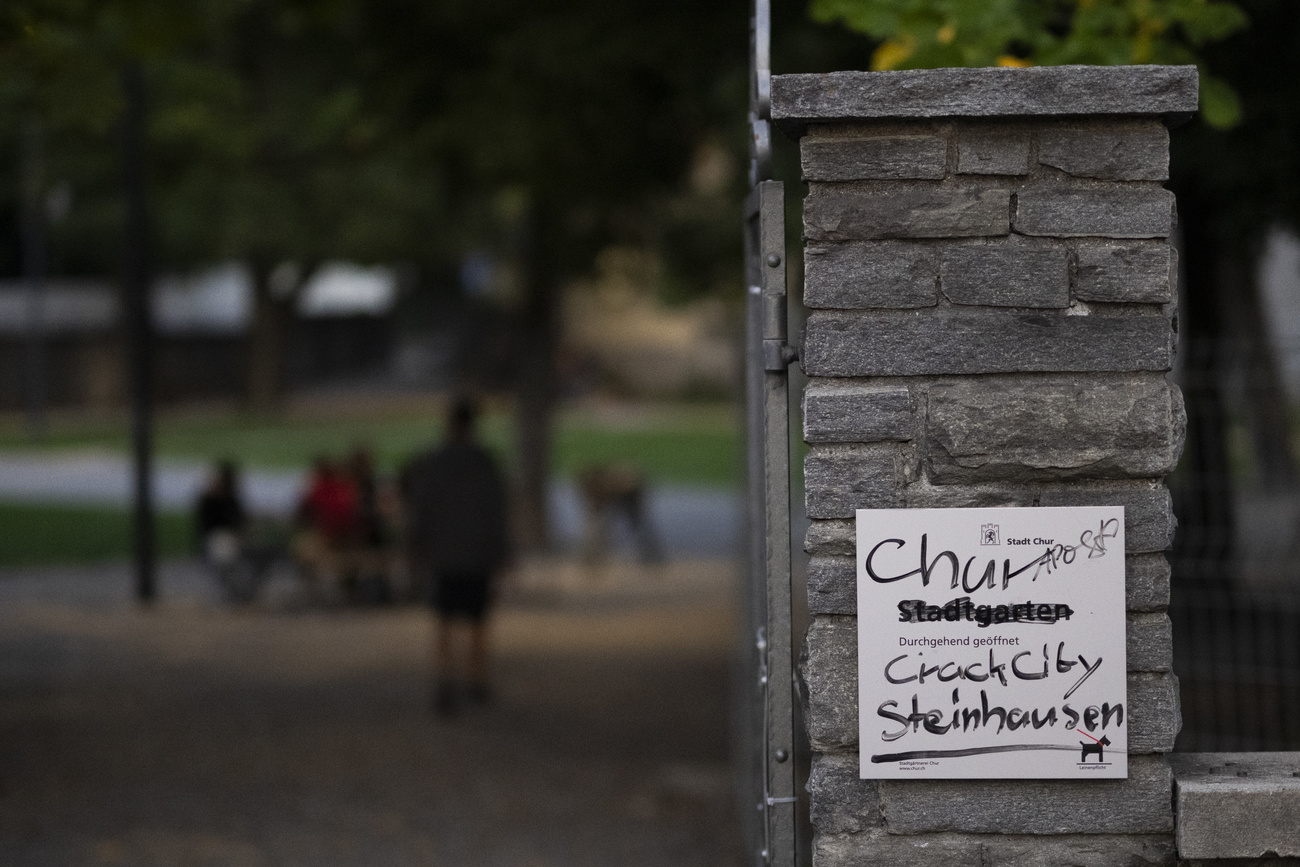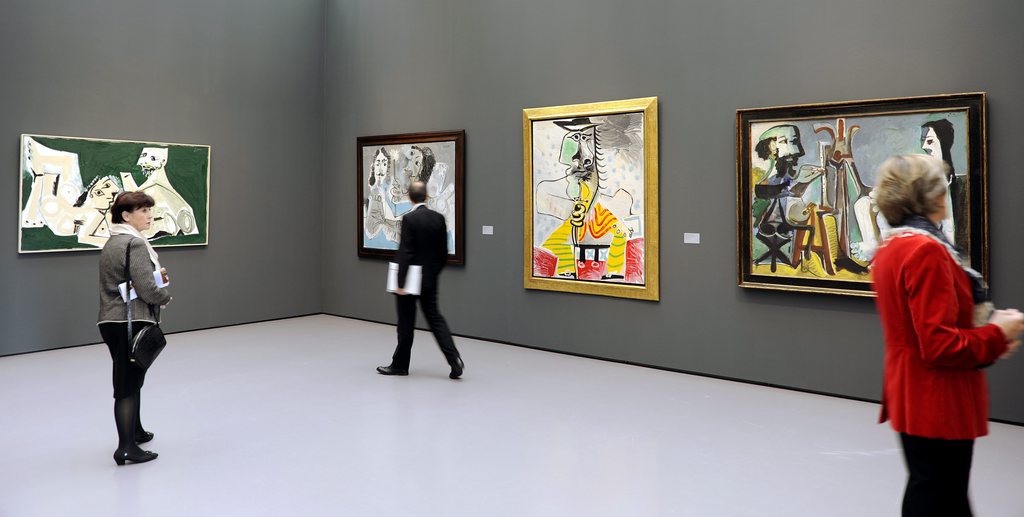Experts query new proof for “early” Mona Lisa

A Swiss-based art foundation says new scientific findings support its claim that the “Isleworth Mona Lisa” is an earlier version of Leonardo da Vinci’s 15th century portrait. But some prominent experts remain unconvinced.
Last September the Zurich-based Mona Lisa Foundation unveiled what it claims is a younger portrayal of Da Vinci’s muse – in her early 20s, a decade younger than the version in the Louvre – supported by various scientific tests and historical and archival records gathered over 35 years that they say proves the authenticity of their Da Vinci painting, known as the Isleworth Mona Lisa.
This week the foundation presented two further scientific tests, one by Zurich’s Federal Institute of Technology (ETHZ), and the other by a specialist in “sacred geometry”, carried out in the wake of the Geneva unveiling.
“When we add these new findings to the wealth of scientific and physical studies we already had, I believe anyone will find the evidence of a Leonardo attribution overwhelming,” foundation vice-president David Feldman declared in a press release on February 13.
But Jan Blanc, an art history professor from Geneva University who has written a book on Da Vinci, told swissinfo.ch that the new findings and recent spate of so-called art scoops had brought to light the total lack of control and evaluation of so-called ‘experts’ whom the art market and collectors call upon to attribute, date and analyse their work, and a growing emphasis on ‘scientific analysis’ that claims to present absolute proofs.
The Mona Lisa – also known as La Gioconda – now hanging in the Louvre in Paris is probably Leonardo’s best known painting.
It is thought to be a portrait of Lisa Gherardini, commissioned by her husband Francesco del Giocondo.
There is some uncertainty about its precise dating.
It is believed to have been started between 1503 and 1506, but it is not known when it was completed.
It ended up in France having been purchased by Francis I.
Carbon dating
The foundation said the carbon-dating test carried out by the ETHZ on the canvas of the Isleworth painting found that it was almost certainly manufactured between 1410 and 1455 – refuting claims that it was a late 16th century copy.
Carbon-dating cannot prove when the painting was done, Feldman told swissinfo.ch, but added to other findings the foundation believes it further confirms that its painting was started in 1503 and used as a model for the far more complex version that hangs in the Louvre.
ETHZ researcher Irena Hajdas clarified to swissinfo.ch that she had carried out a test on an unidentified piece of material sent to the Zurich institute in December by a Swiss deputy judge and was told by the foundation it had come from the Isleworth Mona Lisa a few weeks after the results were released.
She said she could only confirm the carbon-dating findings about the piece of material tested and could not endorse any conclusions about the foundation’s painting, especially as she had not seen the work or documentation as was normal practice for certification.
Oxford University professor Martin Kemp, a world-recognised authority on Da Vinci and one of the Isleworth Mona Lisa’s fiercest critics, told swissinfo.ch that carbon-dating tests were “notoriously slippery”.
“I know of no Italian work from 1410-1455 painted on canvas, other than transportable banners. There is no record of Leonardo having painted on canvas and he would have found its ‘toothy’ nature repellent. In his recipes for making painting he nowhere talks of painting on canvas. He worked to get the smoothest possible surface in the priming of his panels,” he commented.
The foundation say they plan further secondary research on their painting to try to find out what is behind the varnish.
The painting is slightly larger, was painted on canvas and has brighter colours than the Louvre Museum work painted on wood. The posture, folded hand positions, faces, expressions and clothing are similar, while the landscape in the background is different.
The “younger version”, which has been held in a Swiss bank vault for the past 40 years, is not new to the art world, however. It was discovered in 1913 by British art collector Hugh Blaker in a manor house in the west of England where it had hung for a century unnoticed. How it got there is unknown.
Blaker took it to his home in the London suburb of Isleworth. On his death in 1936, it was bought by American collector Henry Pulitzer, who placed it in a Swiss bank but wrote a book about it, published in 1972.
“Misguided”
In the other new test, Italian geometrist Alfonso Rubino, who has made extended studies of the geometry of Leonardo’s Vitruvian Man, concluded that the Isleworth portrait matched Leonardo’s geometry and must be his.
Kemp told swissinfo.ch he believed the search for elaborate surface geometry in Renaissance paintings was “misguided”. “None of the very many drawings for compositions or technical evidence about the preparatory stages of paintings have revealed the deployment of such geometry,” he said.
Blanc concurred. “It’s a while now that art historians have no longer believed in such nonsense and no longer look for ‘hidden geometry’ in in old paintings,” he noted. “So there is no reason to imagine it would be exclusive to original Leonardo da Vinci paintings.”
Kemp was one of several art specialists who challenged the initial findings when the painting was shown last year, and expressed doubts that Da Vinci had painted an earlier version.
He told the Sunday Times last September “so much is wrong with it”, arguing that the Isleworth painting was probably a copy of the Louvre version by an unknown painter who simply chose to make the subject younger.
In reply, Feldman and foundation colleagues retort that Kemp has never seen the painting.
On his blog the professor had described the foundation’s conclusions as “piles of unstable hypotheses, stacked one on another”. He had argued that infrared reflectography and X-rays pointed very strongly to it not being by Leonardo.
“The Isleworth Mona Lisa mis-translates subtle details of the original, including the sitter’s veil, her hair, the translucent layer of her dress, the structure of the hands,” Kemp had stated. “The landscape is devoid of atmospheric subtlety. The head, like all other copies, does not capture the profound elusiveness of the original.”
He assured swissinfo.ch that he stood by all previous statements he had made about the painting.
The foundation in turn refutes Kemp’s comments, adding that suggestions that it is a copy “contradicts the opinions of all the art experts who have seen the painting”.
The work is not for sale, but the foundation is currently building an exhibition which will start a five-year tour at the end of the year, probably beginning in Singapore, Hong Kong or China before moving on to the United States and Europe.

In compliance with the JTI standards
More: SWI swissinfo.ch certified by the Journalism Trust Initiative












You can find an overview of ongoing debates with our journalists here . Please join us!
If you want to start a conversation about a topic raised in this article or want to report factual errors, email us at english@swissinfo.ch.